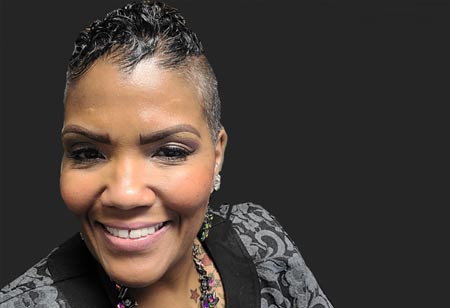Thank you for Subscribing to Healthcare Business Review Weekly Brief

Resilience in Modern Healthcare
Healthcare Business Review
Imana Mo Minard plays a pivotal role in shaping patient care by leading nursing operations across emergency department service line with oversight of four campuses. She partners with medical leadership to build collaborative, high-performing care models while driving policy, compliance, and Magnet status achievement. Focused on quality, safety, and innovation, she champions process improvements, staff engagement, and strategic alignment. Her leadership ensures seamless care delivery, improved outcomes, and a compassionate, efficient patient experience throughout all levels of patient care.
In an exclusive interview with Healthcare Business Review, Imana Mo Minard shared invaluable insights on leading change in healthcare, highlighting the importance of empathy, communication, and innovation particularly through staff engagement and technology adoption to navigate complex transformations effectively.
The Human Side of Change- Empathy, Communication, and Resilience
For me, leading change in healthcare is ultimately about people. Change is inevitable. It is a fact, not a myth. As leaders, we have to meet it with patience, kindness, and grace.
In this fast-moving field, change often arrives without much notice. The unpredictability can cause anxiety for staff, who may wonder how changes will affect their roles, their patients, and the organization overall. As leaders, we need to acknowledge their feelings and respond with care.
Over time, I have learned to rely on what I call my internal toolbox. It is built not just from formal education, but also from the wisdom of mentors, colleagues, and life experience. Change can feel isolating, but staying self-motivated and choosing to focus on what is possible rather than what is uncertain helps both leaders and teams keep moving forward.
Clear communication becomes especially important when things shift quickly. Even when all the answers are not yet available, keeping people informed and offering reassurance can ease the transition. I have been through four healthcare mergers, and I know how much strain those events can place on staff. Including all stakeholders early and often, makes a meaningful difference in how people experience change.
Change is inevitable. It is a fact, not a myth. As leaders, we must meet it with patience, kindness, and grace. Instead of resisting, try to welcome the change and see what good it may bring
One moment that stands out from my time at Corewell Health is when I noticed our weekly leadership meetings were beginning to lose energy and connection. During a time of major organizational change, that kind of disengagement was concerning. I worked with the team to rework the format. We began rotating facilitators and revisiting agenda items to make the meetings more engaging. That small adjustment created a space where leaders felt more supported and linked, which helped us stay grounded through a period of uncertainty.
Embracing Technology and Continuous Feedback for Sustainable Change
One of the most significant changes I’ve helped lead at Corewell Health was our transition to a unified electronic medical record system, EPIC. Previously, different parts of our health system operated on separate instances, which created inefficiencies and limited communication across teams. Moving to a single EPIC platform was a massive undertaking. It touched every employee and required extensive preparation and training.
Even with all of that planning, the transition was challenging. The learning curve was steep. Charting workflows changed dramatically, and staff had to adapt quickly. To support them, my team made continuous feedback a top priority once the system went live. We regularly collected input, held biweekly meetings to review enhancement requests, and made sure staff felt heard. The ongoing dialogue helped us identify pain points, streamline steps, and shape a system that actually supported the way people work.
We’re still making improvements based on what we hear from the front lines. Staying responsive and adaptable is key.
I’m also excited about the potential of artificial intelligence tools like Microsoft CoPilot. These tools can help automate everyday tasks, such as drafting emails, and allow staff to focus on higher-value work. I believe in being an early adopter because it gives us a chance to help shape how new technologies are designed and implemented. It ensures they’re aligned with the real needs of healthcare professionals.
For anyone stepping into a leadership role, I always offer the same advice: meet change with an open mind. Give yourself patience and grace. We’re not robots. We’re human. Preparation matters. So does perspective. My father used to say, “Welcome change, and ask what good it will bring.” I’ve carried that mindset with me throughout my career.
Leading change in healthcare takes empathy, flexibility, and a commitment to learning and growth. Through open communication, thoughtful use of technology, and real support for our teams, I believe we can build organizations that are not only resilient but ready for the future.









